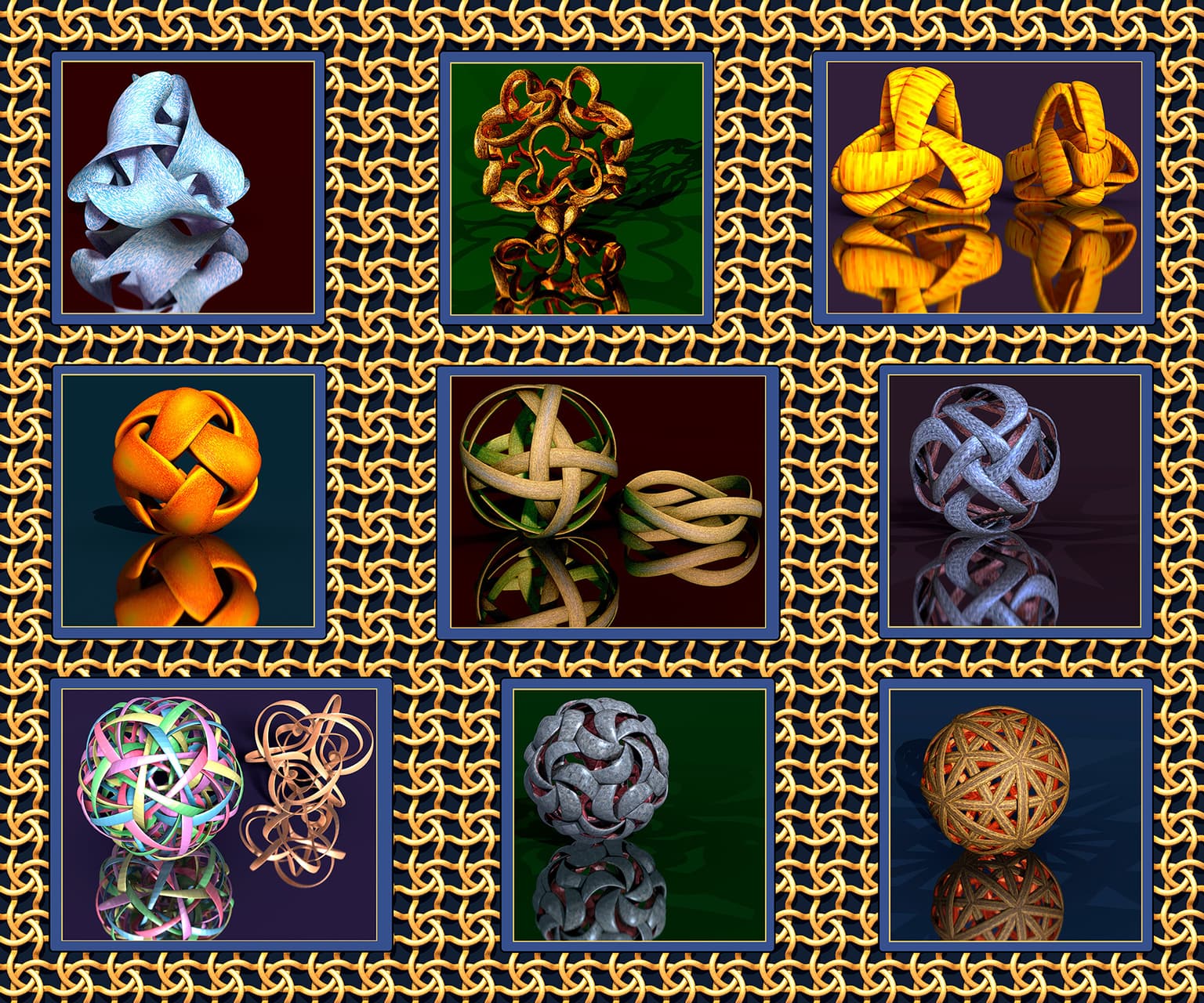2020 Joint Mathematics Meetings
Frank A. Farris
Artists
Frank A. Farris
Professor of Mathematics and Computer Science
Santa Clara University
San Jose, CA
Statement
My art represents an effort to show what mathematics would look like if it entered the physical world. I like to make it seem as if mathematics is both approachable and mysteriously beautiful. My process leads me to apply mathematical knowledge to create art that could not be made without mathematics. My tools include Maple, Photoshop, and, recently, Rhino with Grasshopper. In the Fall of 2019, I attended the semester-long workshop called Illustrating Mathematics at the Institute for Computational and Experimental Research in Mathematics (ICERM).
Artworks

Polyhedral Symmetry from Bands
51 x 61 cm
Digital Print on Aluminum
2019
This sampler shows nine ways to create polyhedral symmetry from bands placed in space. The top row shows tetrahedral shapes "woven" from three, twelve, and four bands, with the middle one not woven at all. The middle row holds configurations with octahedral symmetry, the two on the right showing two distinct ways to weave a cube with six bands: bands with D2 versus C4 symmetry. The bottom row holds icosahedral complexes. The lower left shows the 5-coloring of an icosahedral shape, made from five 6-banded tetrahedra. A paper (with SCU student Wilder Boyden) on this method has been submitted to the Journal of Mathematics and the Arts. The chain mail background applies the same method, using a wallpaper group instead of a polyhedral one.

Steiner Circles and Modular Sequences in a Fountain at Filoli
51 x 61 cm
Digital Print on Aluminum
2019
I wish I could install this (virtual) brass sculpture in that reflecting pond at Filoli, a beloved garden on the San Francisco Peninsula. I'll have to be content with this ray-traced version. The figure began as an exercise in inscribing five Steiner circles in the region between two given circles. Then I experimented with modular sequences of algebraic integers in cyclotomic number fields, creating patterns to fit in the circular regions. The formula for the sequences floats in the trees. The pattern was created from a starting configuration with five congruent circles in the region between two concentric circles. After I inserted sequence paths in the circles, a gentle projective transformation produced the off-center version.